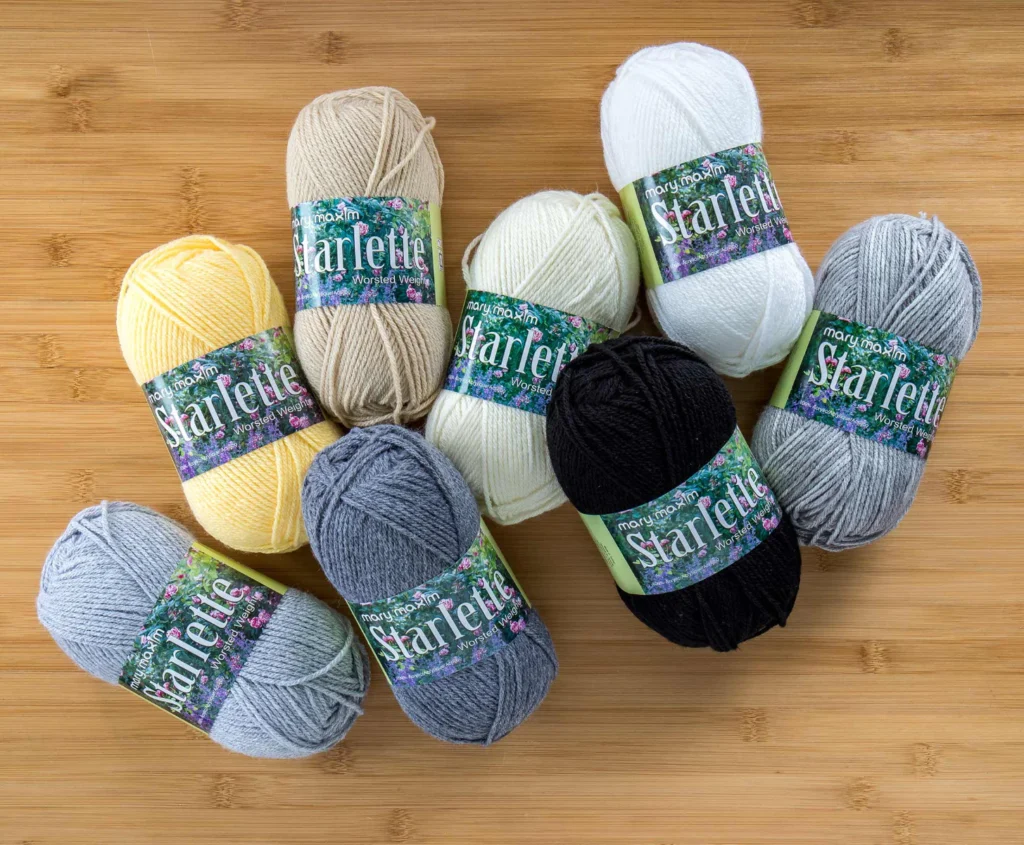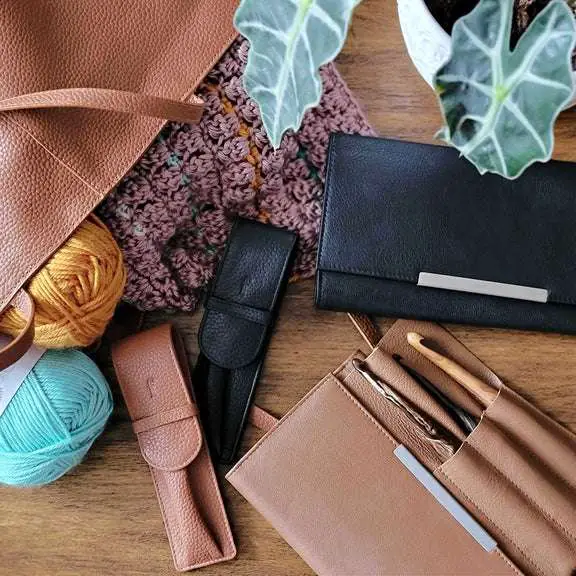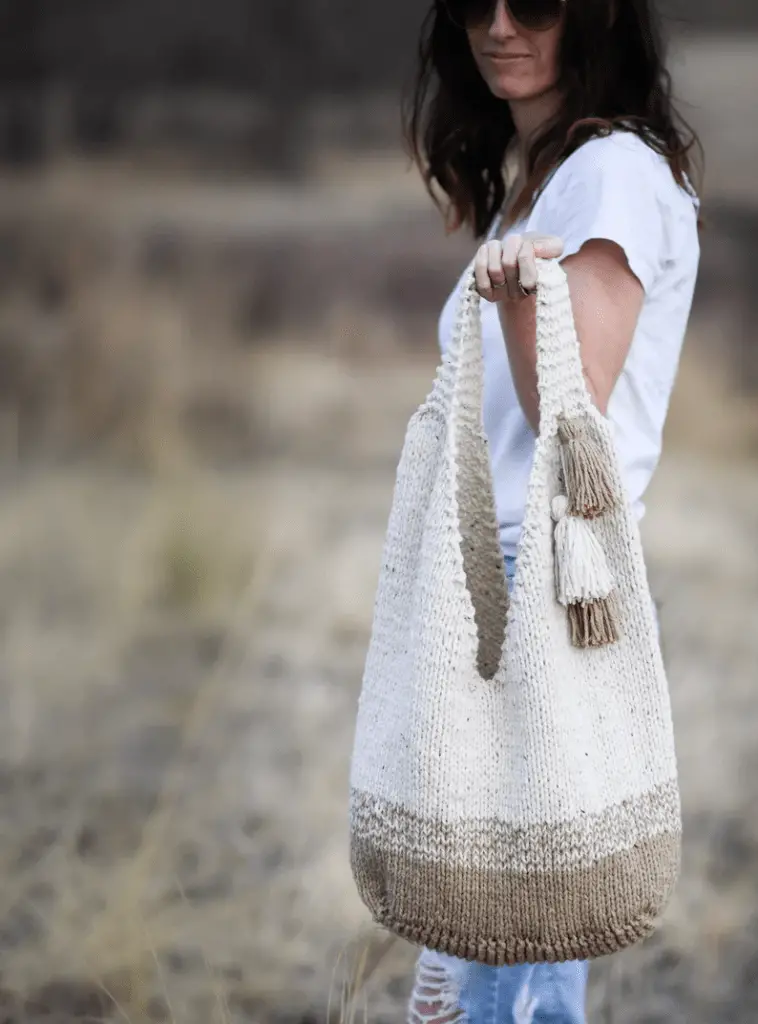Knitting is a versatile and creative hobby that can be used to create a wide range of items, including clothing, accessories, and even knit backpacks. Knitted backpacks can be a stylish and functional addition to your wardrobe, and can be customised to your own unique style and needs.

Supplies to a knit backpack
- Yarn: Choose a yarn that’s appropriate for the size and style of knit backpack you want to make. Consider the texture, weight, and color of the yarn, and make sure to buy enough for your project.

SALE! $3.99 a ball
Good quality that saves the penny!
Knitting needles hook
Choose the appropriate size of circular needles or double-pointed needles for the yarn you have chosen and the gauge of the pattern you are using. The length of the circular needles should be at least as long as the width of your gloves.
Stitch markers – Use stitch markers to mark the beginning of your rounds and any stitch pattern repeats.
Tape measure – Use a tape measure to check your gauge and measure your progress as you knit.
Scissors – You will need scissors to cut your yarn and weave in any loose ends.

Yay or Nay
Darning needle – Use a darning needle to weave in any loose ends and to sew any seams if needed.
Blocking materials – You may want to block your finished gloves to help it maintain its shape. You can use a blocking mat or towels, and pins or blocking wires to hold the gloves in place while it dries.
These supplies are the basics you will need to get started knitting gloves. You may also need additional supplies, such as buttons or clasps, depending on the pattern you choose.
Tips to knit the perfect gloves
- Choose the right yarn – The right yarn can make all the difference when knitting gloves. Look for a soft, stretchy yarn that will be comfortable to wear, such as cotton or bamboo. Avoid yarns that are too heavy or scratchy, as they can be uncomfortable.
- Gauge matters – Make sure you are knitting at the correct gauge for the pattern you are using. Check your gauge before starting your project, and adjust your needle size as needed to achieve the correct gauge. A gauge that is too tight can result in gloves that are too small, while a gauge that is too loose can result in gloves that are too large.
- Choose the right pattern – There are many different patterns available for knitting gloves, so choose one that matches your skill level and the style you are looking for. Some patterns are simple and easy to follow, while others may be more complex with lace or cable details.
- Consider shaping – Shaping can help ensure that your glove fits well and stays in place.
- Try it on – As you knit, try on the gloves periodically to ensure that it fits well and is the correct length. You may need to make adjustments as you go to achieve the perfect fit.
- Finishing is important – Once you have completed the knitting portion of your gloves, take the time to finish it properly. Weave in all loose ends, block the gloves to ensure that it maintains its shape, and add any additional details such as straps or closures.
By following these tips, you can knit perfect gloves that are comfortable, stylish, and fits well. Remember to choose the right yarn, pattern, and gauge, consider shaping, and take the time to finish your gloves properly.
With a little patience and practice, you can create a beautiful knit glove that you will love to wear
8 Knit gloves free patterns
- Needles: You’ll need needles that are the right size for your chosen yarn. Circular needles are best for knitting in the round, but you may also need double-pointed needles or straight needles for certain parts of your backpack.
- Stitch markers: Use stitch markers to keep track of where you are in your pattern, especially when knitting in the round.
- Leather or canvas straps: If you want to add straps to your backpack, consider using a strong, durable material like leather or canvas.
- Fabric or felt: To reinforce the bottom of your backpack, you may want to add a layer of fabric or felt.
- Sewing thread and needle: You may need to sew on additional straps, closures, or embellishments, so make sure you have the right color of thread and a sturdy needle.
- Blocking supplies: To block your knit backpack, you may need a blocking mat, pins, and a spray bottle of water.
Overall, the specific supplies you need will depend on your chosen design and materials. It’s a good idea to plan out your project ahead of time and make a list of the supplies you’ll need.

Keep your hooks organised!
Not only stylish but useful!
Other knit patterns you might love
Tip to the perfect knit backpacks
In this article, we’ll discuss some tips and techniques for knitting your own backpack.
- Choose the right yarn and needles: The type of yarn and needles you use can make a big difference in the final look and feel of your knit backpack. Choose a yarn that’s appropriate for the size and style of backpack you want to make, and make sure to use needles that are the right size for your chosen yarn.
- Plan your design: Before you start knitting, it’s a good idea to plan out your design. Consider the size, shape, and features you want your backpack to have, and sketch out a rough design. This will help you stay on track and avoid mistakes as you knit.
- Knit in the round: To create a seamless and sturdy backpack, it’s best to knit in the round. This will create a continuous tube of fabric that will be less likely to fray or come apart at the seams. Use circular needles to knit in the round, and make sure to mark the beginning of each round with a stitch marker.
- Use a reinforced bottom: The bottom of your backpack will need to be strong and durable to support the weight of your belongings. Consider knitting the bottom in a different color or stitch pattern, and add a layer of fabric or felt to reinforce the bottom and prevent stretching.
- Add pockets and straps: To make your backpack more functional, consider adding pockets and straps. Use a separate yarn or stitch pattern to create pockets, and add straps using a strong, durable material like leather or canvas.
- Take your time: Knitting a backpack can be a time-consuming process, so be patient and take breaks when you need to. It’s better to take your time and produce a high-quality backpack than to rush through the process and end up with a less-than-perfect result.
- Block and finish your backpack: Once you’ve finished knitting your backpack, it’s important to block it to ensure that it’s the right size and shape. Follow the instructions for your chosen yarn to block your backpack, and then finish it by sewing on any additional straps, closures, or embellishments.
Knitting your own backpack can be a fun and rewarding project that allows you to create a customised and functional accessory.
With the right materials, techniques, and planning, you can create a beautiful and unique backpack that you’ll be proud to use every day.
Can a beginner knit a backpack?
While knitting a backpack can be a more challenging project than some simpler knitting projects, it’s definitely possible for a beginner to knit a backpack with some patience and practice. However, it’s important to start with a simple backpack pattern that doesn’t require too many advanced techniques.
If you’re a beginner knitter and you’ve never knit in the round before, it may be helpful to start with some simpler circular knitting projects to get comfortable with the technique. Knitting a hat or a cowl in the round is a great way to practice circular knitting and get used to working with circular needles.
Once you feel comfortable with circular knitting, you can start looking for simple backpack patterns that use basic stitch patterns and techniques. Look for patterns that provide clear instructions and diagrams, and consider using video tutorials to help you understand any unfamiliar techniques.
It’s also a good idea to take your time and practice new techniques on smaller swatches of fabric before starting your backpack project. This will help you work out any mistakes or difficulties before you start on the larger project.
Overall, while knitting a backpack may require some practice and patience, it’s definitely possible for a beginner to accomplish with the right resources and approach.
Knit backpack patterns
1. Knitting Bag Pattern

Since this knit backpack pattern calls for a worsted weight yarn, you will love how fast you will be done with it. Grab the pattern HERE
2. Laadybird knit backpack

Of course we will not leave the kids behind. Make them something fun and useful. Grab the knitting pattern to this backpak HERE.
3. Backpak Knitting pattern

This is a must have, Make it in a variety of colours and thank me later! Grab he pattern HERE.
4. Bucket Backpack Knit pattern

Yes? I thought so, grab the backpack knit pattern HERE
5. Mini backpack pattern

Grab pattern HERE.
6. Knit tote bag pattern

Pattern can be found here
Conclusion
In conclusion, while knitting a backpack can be a more challenging project, it’s definitely possible for a beginner to knit their own backpack with some practice and patience.
By starting with simpler circular knitting projects, finding clear and easy-to-follow backpack patterns, and taking your time to practice new techniques, you can create a unique and functional accessory that you can be proud of.
Whether you’re an experienced knitter or just starting out, knitting a backpack can be a fun and rewarding project that allows you to express your creativity and create something truly one-of-a-kind.
